Photo: Ross Marino/Getty Images
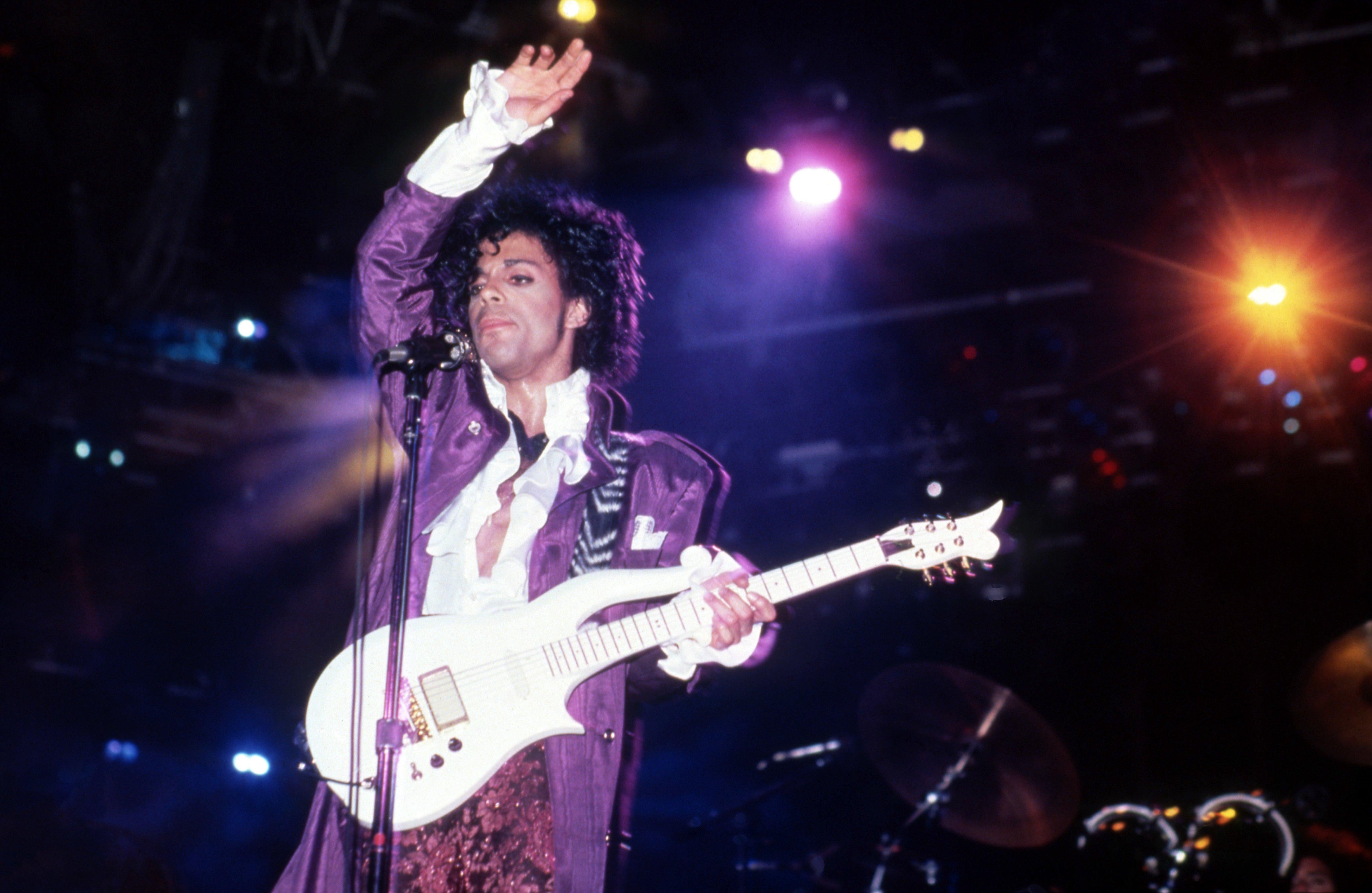
list
7 Reasons Why Prince's 'Purple Rain' Is One Of Music’s Most Influential Albums
In honor of the 40th anniversary of 'Purple Rain,' dig into the ways Prince's magnum opus didn't just solidify him as an icon — it changed the music industry and culture at large.
"I strive for originality in my music," Prince declared in a 1985 interview with MTV. "That was, and will always be the case."
It was this determination to do things his own inimitable way that birthed the decade's most audacious superstar project: Purple Rain.
Prior to the album's June 25, 1984 release, Prince had scored some mainstream hits — including "1999" and "Little Red Corvette" — but hadn't fully blossomed into the prolific, world-conquering musical hero he's now immortalized as. Nor did he have acting experience. Yet, Prince somehow managed to convince his management and label into financing a big-screen hybrid of romance, drama and musical accompanied by an equally ambitious pop soundtrack.
It was an inherently risky career strategy that could have derailed the Purple One's remarkable rise to greatness in one fell swoop. Instead, Purple Rain enjoyed blockbuster success at both the box office and on the charts, with the film grossing more than $68 million worldwide and the album topping the Billboard 200 for a remarkable 24 weeks.
Initially conceived as a double album featuring protege girl group Apollonia 6 and funk rock associates the Time, the Purple Rain OST worked as an entirely separate entity, too. In fact, it had already sold 2.5 million copies in the States before the movie hit theaters, largely thanks to the immediacy of lead single "When Doves Cry," Prince's first ever Billboard Hot 100 No. 1.
And a full 40 years on from its release, Purple Rain's diverse range of power ballads, hard rockers and party anthems still possess the power to stun, whether the phrase "You have to purify yourself in the waters of Lake Minnetonka" is familiar or not. Here's a look at why the GRAMMY-winning record — and 2010 GRAMMY Hall of Fame inductee — is regarded as such a trailblazer.
It Hopped Genres Like No Album Before
While the streaming age has encouraged artists and listeners to embrace multiple genres, back in the 1980s, "stay in your lane" was the common mindset. Of course, a musician as versatile and innovative as Prince was never going to adhere to such a restriction.
The Purple One had already melded pop, soul, R&B, and dance to perfection on predecessor 1999. But on his magnum opus, the star took his sonic adventurism even further, flirting with neo-psychedelia, heavy metal and gospel on nine tracks which completely eschewed any form of predictability. Even its most mainstream number refused to play by the rules: despite its inherent funkiness, "When Doves Cry" is a rare chart-topper without any bass!
As you'd expect from such a virtuoso, Prince mastered every musical diversion taken. And the album's 25 million sales worldwide proved that audiences were more than happy to go along for the ride.
It Championed Female Talent On And Behind The Stage
Although the likes of Jill Jones, Wendy Melvoin and Lisa Coleman had contributed to previous Prince albums, Purple Rain was the first time the Purple One pushed his female musical proteges to the forefront. On "Take Me With U," he shares lead vocals with one of his most famous, Apollonia. On its accompanying tour, he invited Sheila E. to be his opening act. And in something of a rarity even still today, two of the soundtrack's engineers, Susan Rogers and Peggy McCreary, were women.
Melvoin and Coleman would go on to become artists in their own right as Wendy and Lisa, of course. And Prince would also help to radically transform Sheena Easton from a demure balladeer into a pop vixen; compose hits by the Bangles ("Manic Monday"), Martika ("Love Thy Will Be Done"), and Sinead O'Connor ("Nothing Compares 2 U"); and provide career launchpads for Bria Valente and 3RDEYEGIRL.
It Broke Numerous Records
As well as pushing all kinds of boundaries, Purple Rain also broke all kinds of records, including one at the music industry's most prestigious night of the year. At the 1985 GRAMMY Awards, Prince became the first Black artist ever to win Best Rock Performance By A Duo Or Group With Vocal, beating the likes of the Cars, Genesis, Van Halen, and Yes in the process. Purple Rain also picked up Best Score Soundtrack for Visual Media at the same ceremony, and was nominated in the night's most coveted Category, Album Of The Year.
Another impressive feat was the one that had only previously been achieved by the Beatles and Elvis Presley. With the same-named movie also hitting the top of the box office chart, Prince became only the third artist in history to score a No. 1 album, film and song in the same calendar year.
It Changed How Albums Were Sold
Although it seems positively chaste compared to the likes of "WAP," "Anaconda," and "My Neck, My Back (Lick It)," Purple Rain's tale of a "sex fiend" who enjoys pleasuring herself in hotel lobbies was deemed so provocative at the time of release that it inadvertently instigated a political taskforce.
Appalled by the sexual lyrical content of "Darling Nikki," a track she caught her 11-year-old daughter Karenna listening to, future Second Lady Tipper Gore decided to set up the Parents Music Resource Centre with three other "Washington Wives." The organization subsequently persuaded the record industry and retailers to issue any album containing child-unfriendly material with Parental Advisory stickers. (Another Prince-penned hit, Sheena Easton's "Sugar Walls," was also included alongside "Darling Nikki" in the "Filthy 15" list of songs the PMRC deemed to be the most offensive examples.)
It Paved The Way For The Pop Star Film
Prince was the first pop superstar from the 1980s holy trinity to bridge the gap between Hollywood and MTV, with Purple Rain arriving eight months before Madonna's star turn in Desperately Seeking Susan and four years before Michael Jackson's fantastical anthology Moonwalker. And it spawned a whole host of similar vanity projects, too.
You can trace the roots of everything from Mariah Carey's Glitter to Eminem's 8 Mile back to the tale of a troubled musical prodigy — nicknamed The Kid — who finds solace from his abusive home life at Minneapolis' hottest night spot. And while the acting and screenplay were never going to trouble the Academy Awards (as lead actress Apollonia predicted, however, it did pick up Best Score), Purple Rain's spellbinding onstage performances captures the euphoria of live music better than any other concert film, fictional or real.
It Helped Redefine Masculinity in Pop
"I'm not a woman, I'm not a man/ I am something that you'll never understand," Prince sings on Purple Rain's biggest dance floor number "I Would Die 4 U" — one of many occasions in both the album and film that challenged notions of masculinity, gender and sexuality even stronger than the Purple One had before.
Indeed, although the early '80s was unarguably a boom period for white British pop stars outside the heteronormative norm, it was rarer to find artists of color so willing to embrace such fluidity. Prince, however, had no problem — whether sporting his now-iconic dandy-ish, ruffled white shirt and flamboyant purple jacket combo, or unleashing his impressive array of diva-like shrieks and screams on "Computer Blue" and "The Beautiful Ones." André 3000, Lil Nas X and Frank Ocean are just a few of the contemporary names who have since felt comfortable enough to express themselves in similarly transgressive fashion.
It Added To The Great American Songbook
From the apocalyptic rockabilly of "Let's Go Crazy" ("We're all excited/ But we don't know why/ Maybe it's 'cause/ We're all gonna die") and messianic new wave of "I Would Die 4 U," to the experimental rock of "Computer Blue" and self-fulfilling prophecy of "Baby, I'm A Star," Purple Rain delights at every musical turn. But it's the title track that continues to resonate the most.
Following Prince's untimely death in 2016, it was "Purple Rain" — not "1999," not "Kiss," not "The Most Beautiful Girl in the World" — that many fans gravitated toward first. Initially conceived as a country duet with Stevie Nicks, the epic power ballad was described by Prince as pertaining "to the end of the world and being with the one you love and letting your faith/ God guide you through the purple rain."
The superstar acts every inch the preacher on the emotional tour-de-force. And as the final song that Prince ever performed live — on the Atlanta leg of his Piano & A Microphone tour, a week before his untimely passing — closed the curtains on a truly revolutionary career.
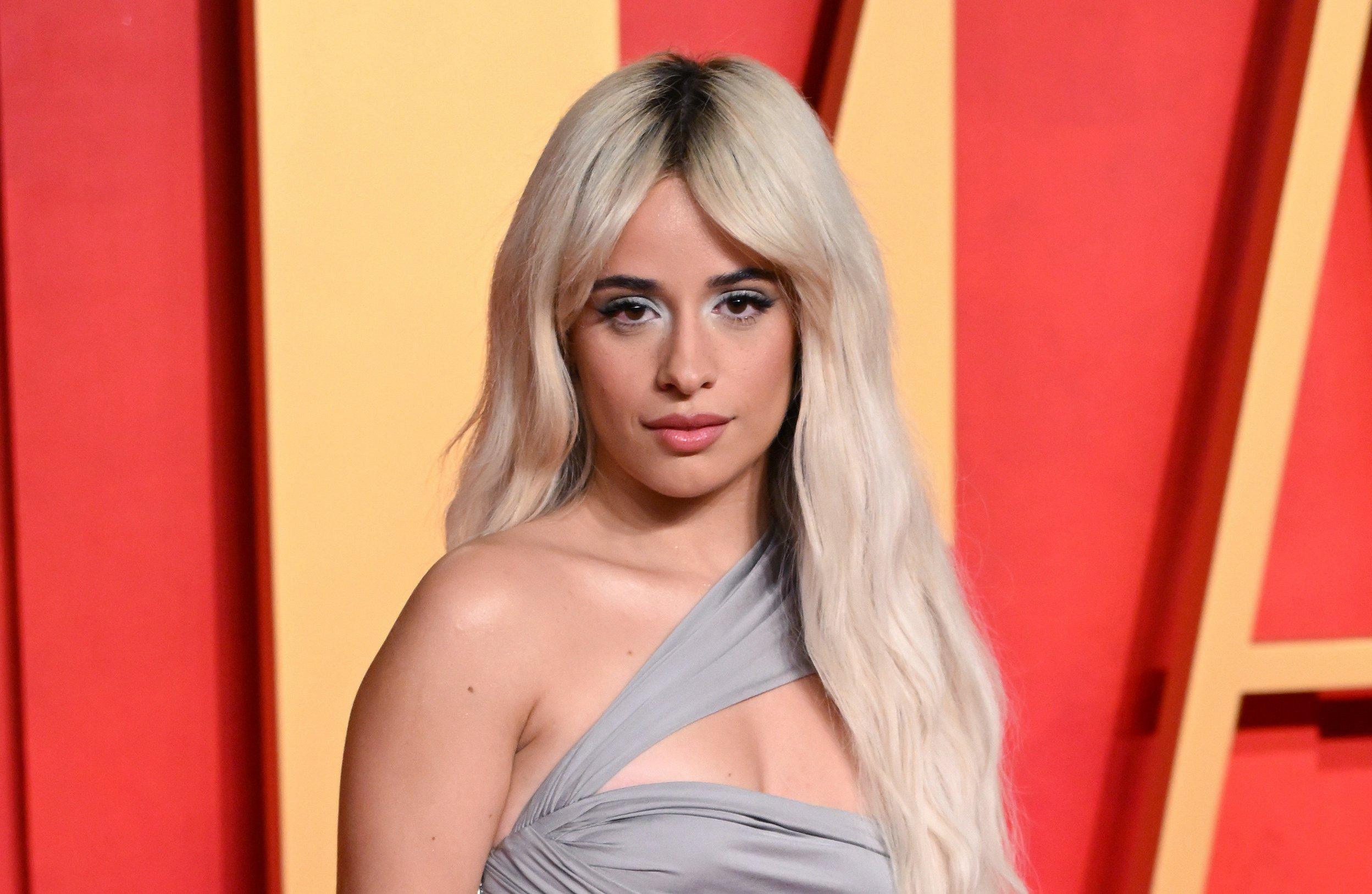
Photo: Karwai Tang/WireImage
feature
Camila Cabello's Sonic Evolution To 'C, XOXO': How She Went From Pop Princess To Club Star
With her fourth album, 'C, XOXO,' Camila Cabello introduces a new sound inspired by the sweaty dance floors of the Miami club scene. Here's a breakdown of the musical shape-shifting that's led the star to her hyperpop venture.
When Camila Cabello unleashed the singles "I LUV IT" and "HE KNOWS" from her highly anticipated fourth album C, XOXO this past spring, it was obvious that the pop superstar had completely flipped her previous sound on its head. Decidedly hyper-pop, the album is tailor-made for the club, with Cabello saying it's all sonically dedicated to the late-night culture of her home city of Miami.
While her new sonic direction might be a bit jarring for those who were fans of her previous bubblegum flavors or Latin-inspired tracks, it's not entirely surprising that she's trying something new with this album. Since her 2016 departure from the girl group Fifth Harmony, the singer has been known to take musical chances when it comes to her career. Now, she adds frenetic club tracks to the list.
From the innocence of her breakthrough to a more grown-up sound and every detour in between, this is how Camila Cabello's artistic voice has evolved through the years.
Reality Show Breakout: Classic Covers
It may seem hard to believe now, but there was a time when Cabello was just another singing talent vying for her big break when she attended a cattle call audition for "The X Factor." Cabello's interest in performing actually came as a shock to her parents. "She was so shy, so shy," her mother Sinuhe told the New York Times in 2018. "We didn't even think music was a possibility for her."
Oddly enough, her successful audition with Aretha Franklin's soul classic "Chain of Fools" never even aired (the show reportedly couldn't get the rights to the song). Nevertheless, you know the rest: she was grouped together with Ally Brooke, Normani, Dinah Jane, and Lauren Jauregui, and Fifth Harmony was born. The group quickly became known for powerhouse vocals on covers ranging from Elie Goulding's "Anything Could Happen," to Cabello belting out solo while performing The Beatles classic "Let It Be" during their stint on the show; the quintet ultimately placed third.
Girl Group Launching Pad: Party-Friendly Anthems
As part of Fifth Harmony, Cabello's initial sound was decidedly pop-dance songs, perfect for a high school prom — a fitting style for the then teenage star. Songs like their dynamic debut single "Miss Movin' On", the playfully sexy "Work From Home," and horn-tinged "Worth It" cemented them as bona fide pop breakouts. But eventually, Cabello realized that her and her group mates were drifting apart.
"I started distancing myself from the group vision," she admitted to the Call Me Daddy podcast earlier this year. "It felt like you know they were still really passionate and into that and so, I was just like, 'I'm not happy here anymore, it doesn't feel aligned.'"
With that, Cabello shocked fans when she departed the group in December 2016. "Fifth Harmony wasn't the maximum expression of me individually," she told Seventeen a couple months after her surprise departure, alluding to her shift to more personal songs. "My fans are really going to know me from the music I'm writing. My goal is to be brave and open up my soul."
Solo Stardom: Personal Pop Confections
By the time Cabello's self-titled debut studio album was released in 2018, it was apparent that leaving the group that made her a star would pay off. Her initial forays into solo stardom came in the form of collaborations, first in 2015 with eventual on-and-off flame Shawn Mendes on "I Know What You Did Last Summer," and then with Machine Gun Kelly for 2016's Pop Airplay-topping (and Fastball sampling) "Bad Things." But her 2017 collab hinted that she was destined to be a superstar: "Havana."
Featuring Young Thug, the salsa-inspired song earned Cabello her first No. 1 hit on the Billboard Hot 100. It also marked a difference from her former bubblegum sound, and proved the Cuba-born star could successfully bridge the gap between mainstream success and her own story. Meanwhile, the single "Never Be The Same" (for which she recruited Frank Dukes, known for his work with Lorde and Post Malone) proved she could embody a more adult pop sound.
"I feel like the best way to come up with something new and different is just to be the you-est you possible," Cabello told the New York Times when the album was released. "If you pull from all the different little parts of yourself, nobody can replicate that."
Cabello also embodied these hallmarks for her sophomore album, Romance, which featured a heartfelt ode to her dad, "First Man," and several songs inspired by her, well, romance with Mendes. That included "Señorita," which actually featured Mendes; the song quickly became Spotify's biggest streaming song of the summer of 2019. And with a sultry Latin flair, "Señorita" offered another nod to her roots — and the sounds that would soon be the focus of her music.
Sonic Trip Down South: Latin Roots
With the success of songs like "Havana" and "Señorita" in mind, Cabello made her junior album a full-on salute to her Cuban heritage in the form of Familia. Each track is decidedly Spanglish, from lead single "Bam Bam," an inspired collaboration with Ed Sheeran (who featured her on his own Latin-inspired track, "South of the Border," in 2019), to "Hasta los Dientes,"which featured the Argneitian star María Becerra.
"This [album] has been finding my way back," she explained to GRAMMY.com at the time. "A big part of that is my roots, and my heritage. I want to spend the most time in Latin America and in Mexico because it just makes me feel like myself."
According to the star, the album bolstered her confidence; in turn, it helped her fully feel free to express herself. "There's no walls of any of that other, like, ego stuff up. So that's why [Familia] was the most fun experience, and what I think is my best work so far."
Latest Chapter: Hyperpop Diversion
With the first single from her fourth project, "I LUV IT" (featuring Playboy Carti), it was obvious Cabello was about to embark on yet another complete reconstruction of her sound. The song served as a tantalizing hint that the singer's next album, C, XOXO, ventured in a hyperpop direction. In reality, it's a concept album based on long, late, wild, and sometimes melancholy nights in Miami. Second single, "HE KNOWS" with Lil Nas X, marked further proof.
"We wanted to see how we could take these cadences that have a certain swagger and contrast it with beautiful music and pretty chords and lush guitar," Cabello told PAPER Magazine of her latest process earlier this year. But while not every song exhibits that oft-discussed Charli XCX-influenced hyperpop sound, her aforementioned lead singles arguably do."We were mixing and matching to find something new and inspiring. If it's a sweet melody, let's make the music scary. If she has a rap flow, let's make the music acoustic."
The album's tracks also develop with an ominous aura. "Pretty When You Cry," for example, sounds like it's sung while sitting on a sidewalk outside the club one late night with mascara streaking; in the distance the listener hears the warped, low echoes of an inspired sample of Pitbull's "Hotel Room Service." As a result, the music is the starkest contrast yet from her bubblegum past — further proof that Cabello's penchant for genre-swapping has turned into a singular aspect of her superstar career.
Latest News & Exclusive Videos

New Music Friday: Listen To New Songs From Kelsea Ballerini, Lil Nas X, MC Lyte, LISA From Blackpink & More
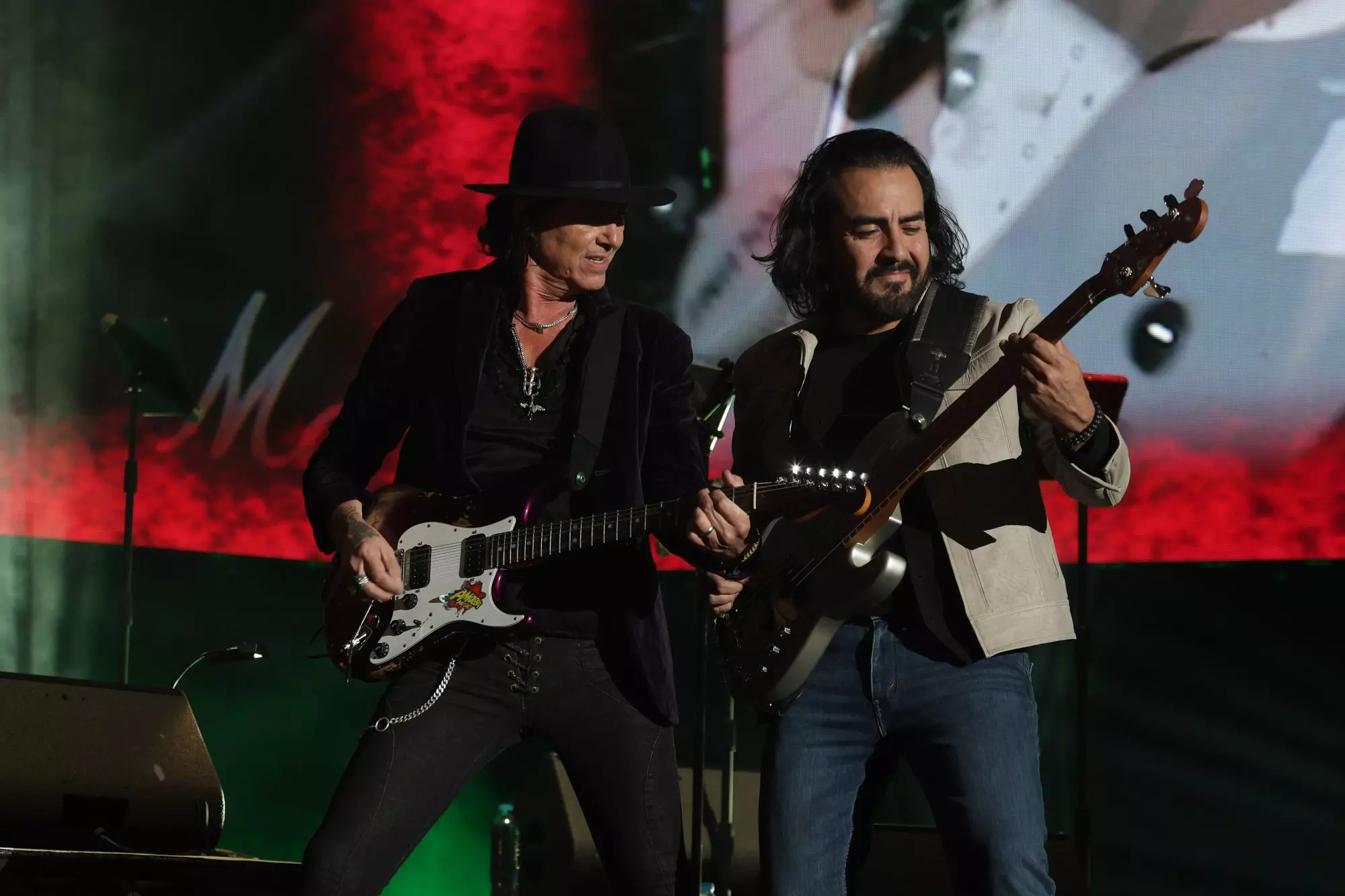
Revisiting 'El Nervio Del Volcán' At 30: How Caifanes' Final Album Became A Classic In Latin American Rock

Watch Prince’s GRAMMYs Highlights
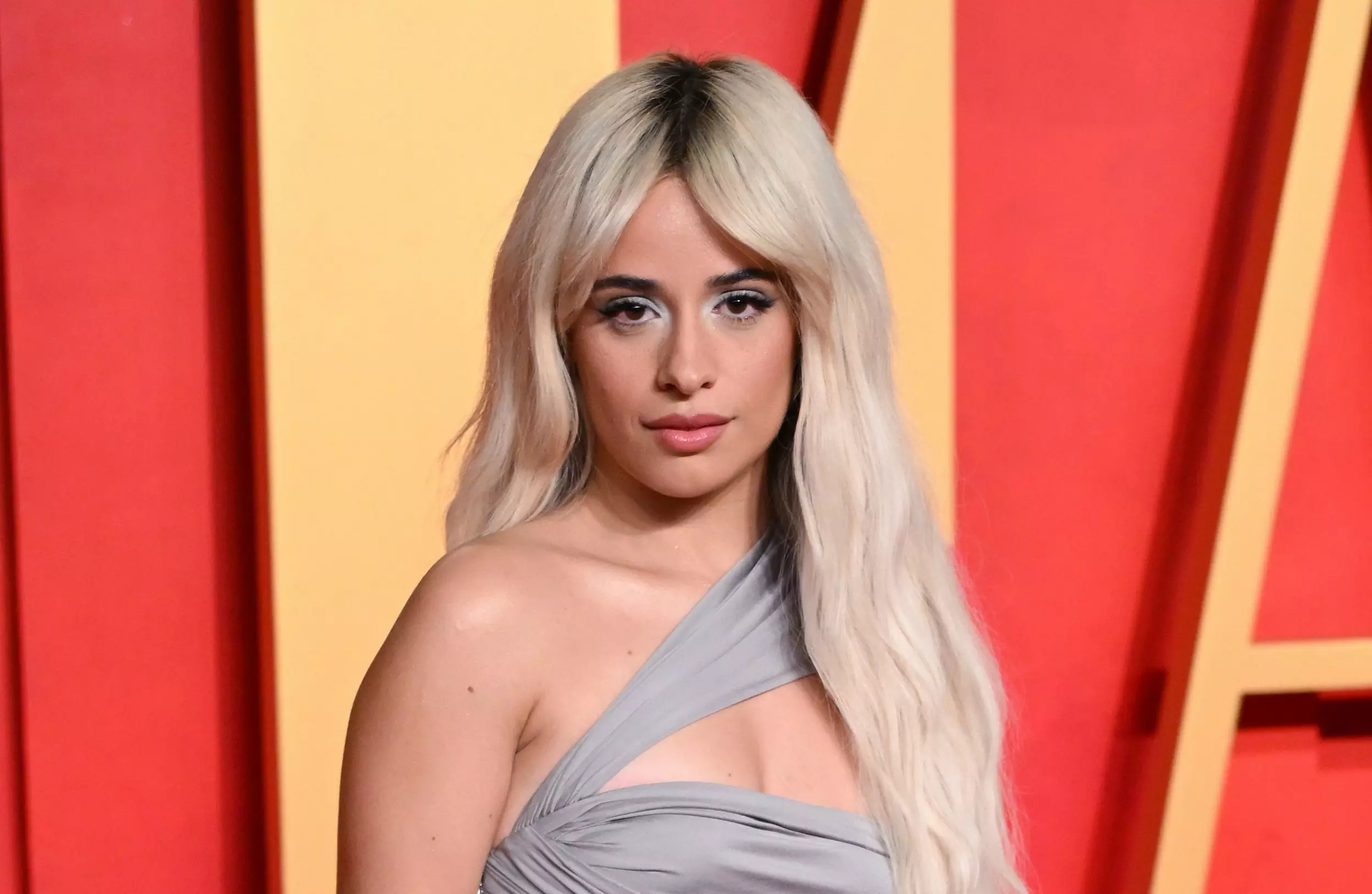
Camila Cabello's Sonic Evolution To 'C, XOXO': How She Went From Pop Princess To Club Star
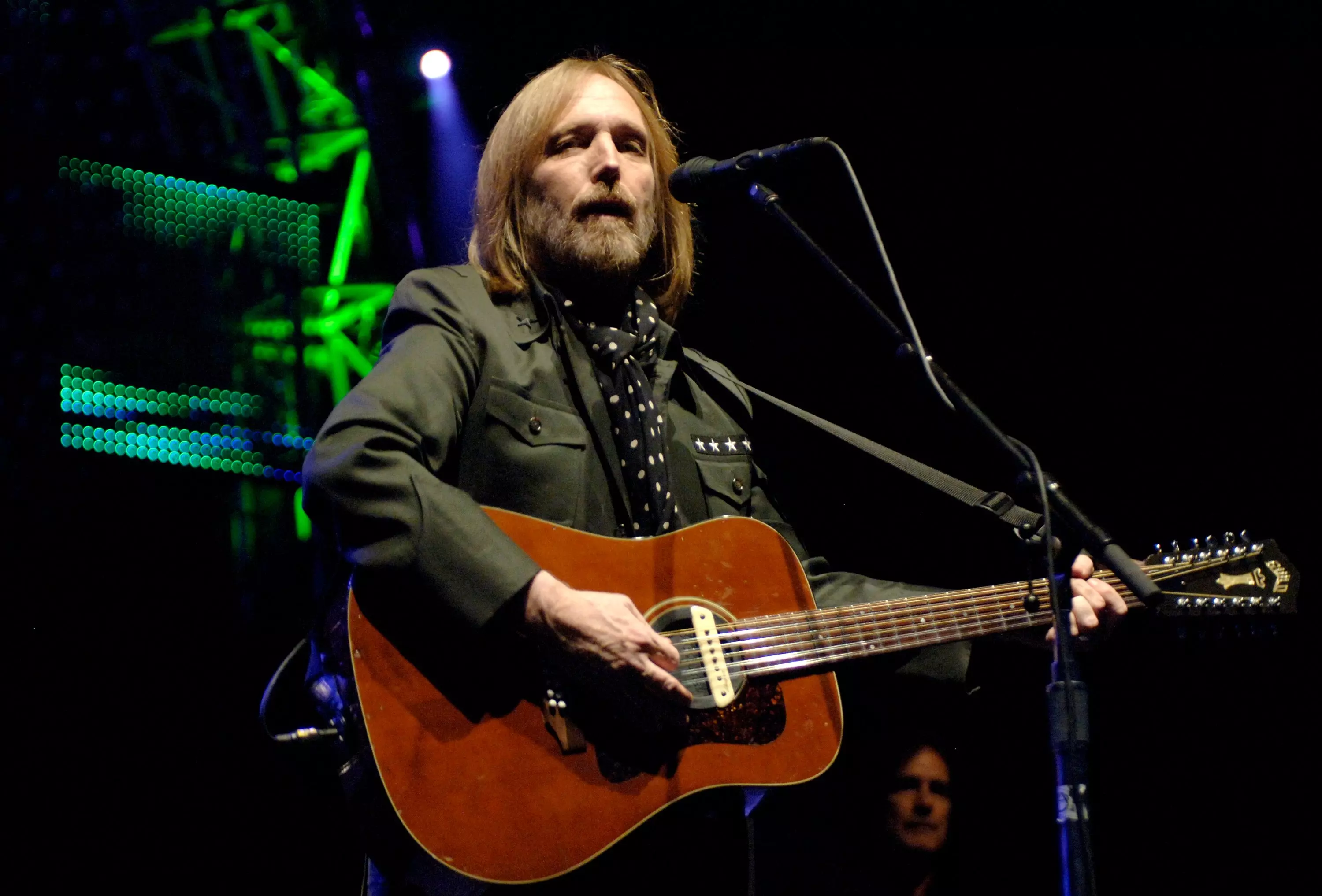
How 'Petty Country: A Country Music Celebration' Makes Tom Petty A Posthumous Crossover Sensation
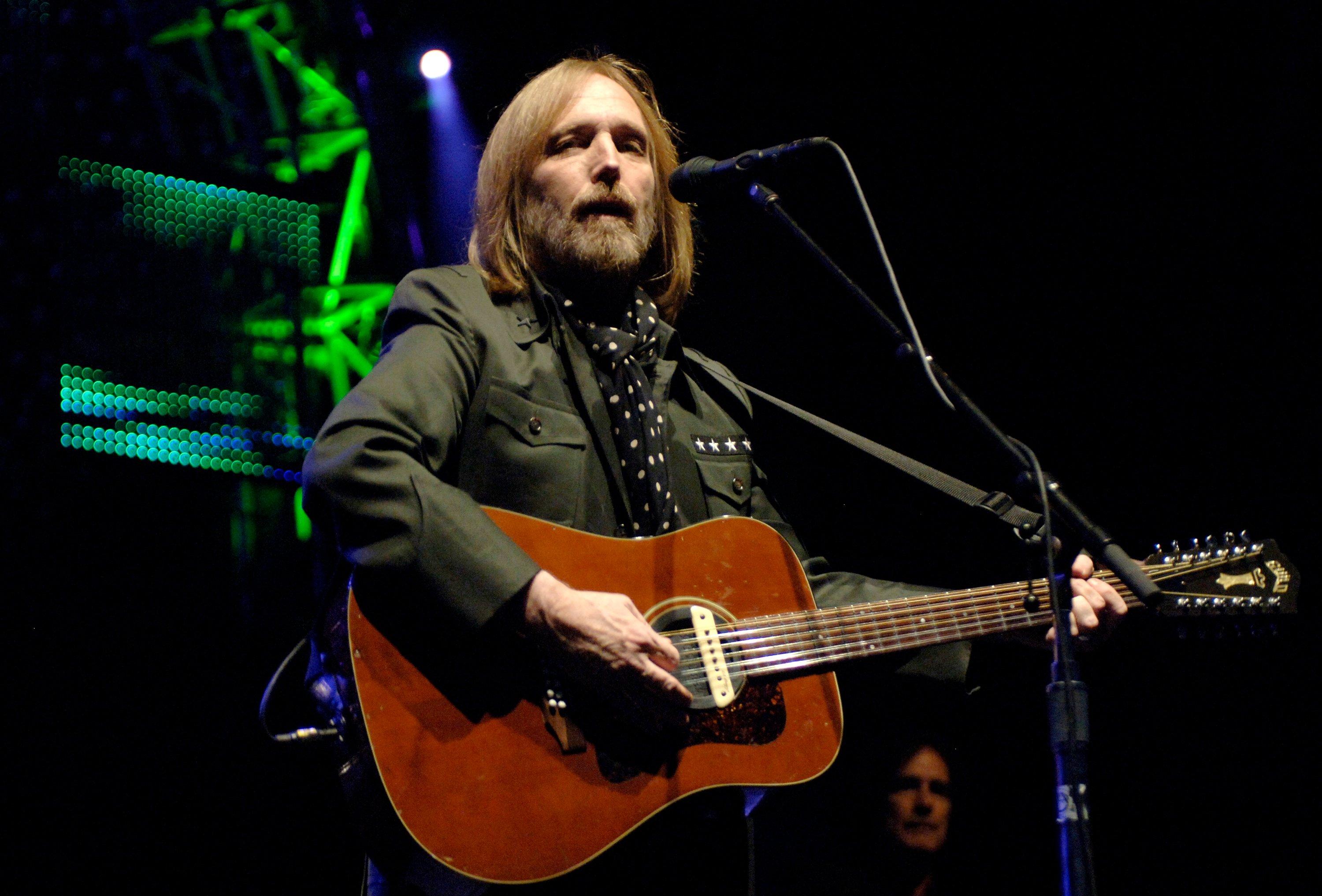
Photo: Tim Mosenfelder/Getty Images
feature
How 'Petty Country: A Country Music Celebration' Makes Tom Petty A Posthumous Crossover Sensation
On 'Petty Country,' Nashville luminaries from Willie Nelson to Dolly Parton and Luke Combs make Tom Petty’s simple, profound, and earthy songs their own — to tremendous results.
If Tom Petty and the Heartbreakers landed in 2024, how would we define them? For fans of the beloved heartland rockers and their very missed leader, it's a compelling question.
"It's not active rock. It's not mainstream rock. It's not country. It would really fall in that Americana vein," says Scott Borchetta, the founder of Big Machine Label Group. "When you think about what his lyrics were and are about, it's really about the American condition."
To Borchetta, these extended to everything in Petty's universe — his principled public statements, his man-of-the-people crusades against the music industry. "He was an American rebel with a cause," Borchetta says. And when you fuse that attitude with big melodies, bigger choruses, and a grounded, earthy perspective — well, there's a lot for country fans to love.
That's what Coran Capshaw of Red Light Management bet on when he posited the idea of Petty Country: A Country Music Celebration of Tom Petty, a tribute album released June 21. Featuring leading lights like Dolly Parton ("Southern Accents"), Willie and Lukas Nelson ("Angel Dream (No. 2)," Luke Combs ("Runnin' Down a Dream"), Dierks Bentley ("American Girl,") Wynonna and Lainey Wilson ("Refugee"), and other country luminaries covering Tom Petty classics, Petty Country is a seamless union of musical worlds.
Which makes perfect sense: on a core level, Petty, and his band of brothers, were absolutely steeped in country — after all, they grew up in the South — Gainesville, Florida.
"Tom loved all country music. He went pretty deep into the Carter Family, and "Will the Circle Be Unbroken?" and the folk, Americana heart of it," says Petty's daughter, Adria, who helps run his estate. "Hank Williams, and even Ernest Tubb and Patsy Cline… as a songwriter, I think a lot of that real original music influenced him enormously." (The Flying Burrito Brothers, and the Byrds' Gram Parsons-hijacked country phase, were also foundational.)
A key architect of Petty Country was the man's longtime producer, George Drakoulias. "He's worked with Dad for a hundred years since [1994's] Wildflowers, and he has super exquisite taste," Adria says.
In reaching out to prospective contributors, he and fellow music supervisor Randall Poster started at the top: none other than Willie Nelson and Dolly Parton. "Having Willie and Dolly made people stand up and pay attention," Dreakoulias told Rolling Stone, and the Nashville floodgates were opened: Thomas Rhett ("Wildflowers"), Brothers Osborne ("I Won't Back Down"), Lady A ("Stop Draggin' My Heart Around"), and so many others.
Each artist gave Petty's work a distinctive, personal spin. Luke Combs jets down the highway of "Runnin' Down the Dream" like he was born to ride. Along with Yo-Yo Ma and founding Heartbreakers keyboardist Benmont Tench, Rhiannon Giddens scoops out the electronics and plumbs the droning, haunting essence of "Don't Come Around Here No More."
And where a lesser tribute album would have lacquered over the songs with homogenous Nashville production, Petty Country is the opposite.
"I'm not a fan of having a singular producer on records like this. I want each one of them to be their own little crown jewel," Borchetta says. "That's going to give us a better opportunity for them to make the record in their own image."
This could mean a take that hews to the original, or casts an entirely new light on it. "Dierks called up and said, 'Hey, do you think we would be all right doing a little bit more of a bluegrass feel to it?' I was like, 'Absolutely. If you hear it, go get it.'"
"It had the diversity that the Petty women like on the records," Adria says, elaborating that they wanted women and people of color on the roster. "We like to see those tributes to Tom reflect his values; he was always very pro-woman, which is why he has such outspoken women [laughs] in his wake."
Two of Petty Country's unquestionable highlights are by women. Margo Price chose "Ways to Be Wicked," a cut so deep that even the hardcore Petty faithful might not know it; the Let Me Up (I've Had Enough) outtake was buried on disc six of the 1995 boxed set Playback.
"Man, it's just one of those songs that gets in your veins," Price says. "He really knew how to twist the knife — that chorus, 'There's so many ways to be wicked, but you don't know one little thing about love.'" Founding Heartbreakers guitarist Mike Campbell features on the dark, driving banger.
And all interviewed for this article are agog over Dolly Parton's commanding take on "Southern Accents" — the title track of the band's lumpy, complicated, vulnerable 1985 album of the same name. "It's just revelatory… it brings me to my knees," Adria says. "It's just a phenomenal version I know my dad would've absolutely loved."
"It's one of Dolly's best vocals ever, and it's hair-raising," Borchetta says. "You could tell she really felt that track, and what the song was about."
Adria is filled with profuse gratitude for the artists preserving and carrying her dad's legacy.
"I'm really touched that these musicians showed up for my dad," she says. "A lot of people don't want to show up for anything that's not making money for them, or in service to their career, and we really appreciate it… I owe great debt to all of these artists and their managers for making the time to think about our old man like that."
Indeed, in Nashville and beyond, we've all been thinking about her old man, especially since his untimely passing in 2017. We'll never forget him — and will strum and sing these simple, heartfelt, and profound songs for years to come.
Let Your Heart Be Your Guide: Adria Petty, Mike Campbell & More On The Enduring Significance Of Tom Petty's Wildflowers
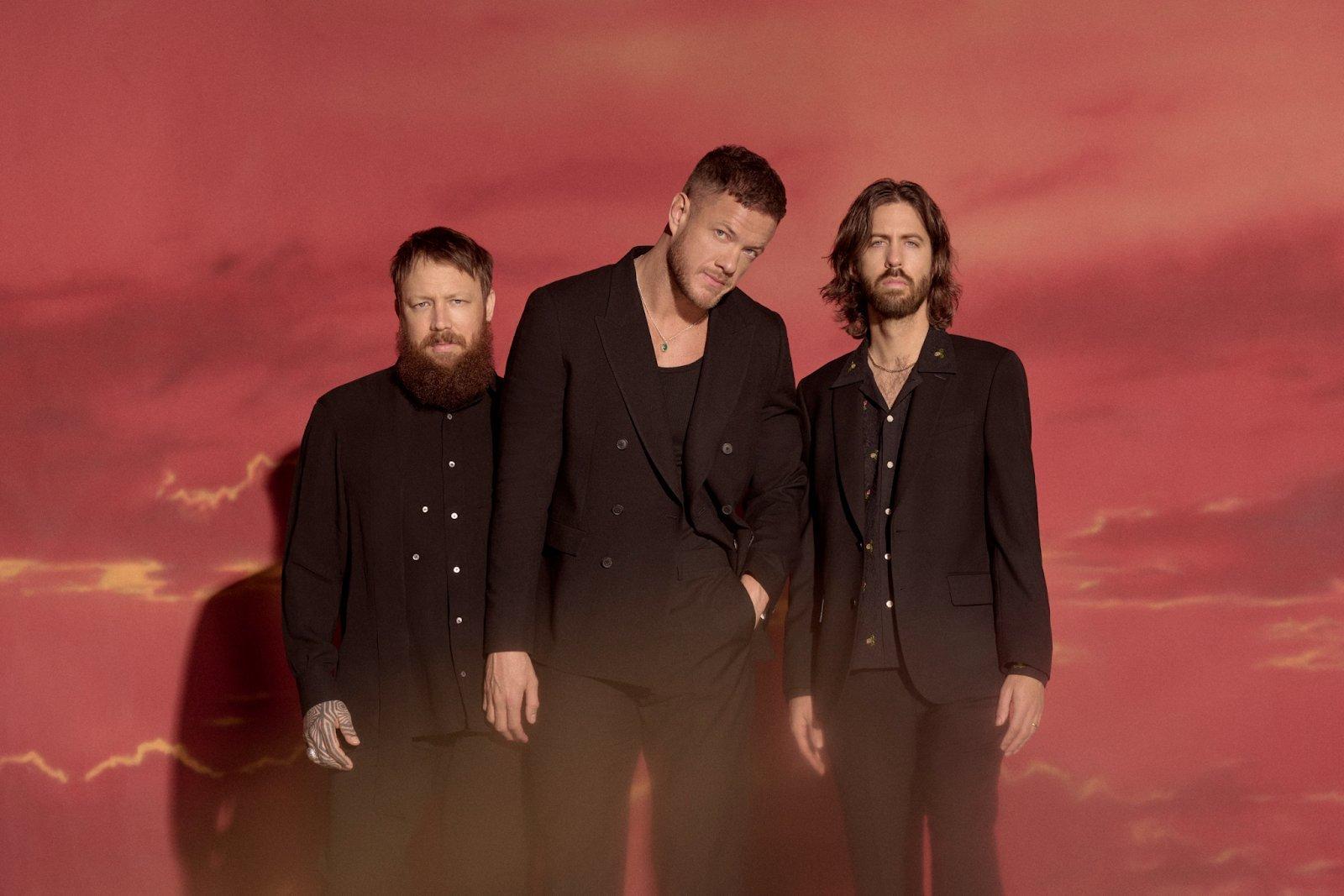
Photo: Ray Davidson
interview
Inside Imagine Dragons’ 'Loom': Dan Reynolds On How A Sense Of Foreboding Led To The Band's Most Colorful Album
Imagine Dragons' sixth release, ‘Loom,’ is filled with melodic soundscapes featuring big choruses that conjure deep feeling. It's exactly how Dan Reynolds wanted it; the frontman details the inspirations behind the nine-track LP.
For a dozen years now, Imagine Dragons have delivered melodic anthems that have resonated with audiences from Idaho to Italy. Whether you call the band’s sound arena rock, power pop or formulaic does not matter. What does is the effect these soundscapes have on the masses, album after album.
The Las Vegas trio of Dan Reynolds, Ben McKee and Wayne Sermon may divide critics and peers, but there is no denying they are master craftsmen of earworms. The GRAMMY-winning group has served hit after Billboard-topping hit, racking up sales of 74 million album equivalents, 65 million digital songs and over 160 billion streams.
Frontman and chief lyricist Reynolds despises labels and says conversations about genre are "trite." And, anyway, the songwriter does not make music with fans or critics in mind. Instead, it’s about what he's feeling at any given moment and whether the melody moves him.
"I love things that are melodic," Reynolds tells GRAMMY.com. "I was a classical pianist for 10 years from six to 16 — playing Chopin, Beethoven and Bach — and their songs feature pleasing melodies and intervals. My brain was formed in that classical piano training and that’s still where I write melodies from."
On their sixth studio album, Loom, Imagine Dragons continue the upward trajectory that started with their GRAMMY-winning debut Night Visions. Loom features nine new songs marked by big choruses, pleasing melodies and lyrics that concurrently make you cringe at the clichés and sing along.
Following a period of heavy loss for Reynolds when his grief hung like an invisible cobweb clouding his thoughts — and that Mercury - Acts 1 & 2 chronicled in song— Imagine Dragons went their separate ways. A break was needed and family time called before any thoughts were given to what loomed next.
Learn more: Inside Imagine Dragons' Biggest Hits: Dan Reynolds Details How "Believer," "Radioactive" & More Came To Be
Loom is definitely a more joyful record, but buried beneath these sanguine melodies there is still some sadness. In between recording the last album and this one, Reynolds went through a divorce — a life change that is explored in songs like "Don’t Forget Me" and "Fire in These Hills."
For Reynolds, playing live to sold-out arenas and seeing thousands of strangers singing — just like writing songs — is therapeutic. Sporting a plain white t-shirt, with a rack of guitars behind him, the singer-songwriter discussed navigating change, catharsis, the inspirations behind Loom, and why he makes music today is no different than what led him to penning his first-ever song.
"I’m in therapy every week and I have been since I was young," says Reynolds, adding that he started writing music at age 12 to handle emotional distress. "I didn’t know how to say what I was feeling and it wasn’t working by just writing it in a journal. Something about singing those words and putting it over a sonic soundscape felt cathartic. This record was no different and it felt really good."
Ahead of Loom’s release on June 28, GRAMMY.com chatted with Reynolds via Zoom about the inspirsations behind what he considers the band’s most colorful record. The 36-year-old melody maker appeared affable, admitted to currently being sober, and that he was excited to hit the road again with his bandmates for a 30-plus date North American tour that begins at the end of July.
A Sense Of Foreboding, Good And Bad
Multiple members of Imagine Dragons threw out names for their new record, Reynolds notes. "'Loom' just came to me out of nowhere during the filming of our first video. I was like, 'Guys, what do you think?' Within minutes they all loved it."
Reynolds likes the ideas and connotations that come with such a simple word: that something is coming. "The word feels ominous, but it can also be positive," he explains. "This record really dives into change as a lot of change was happening in my life when I wrote these songs."
Beyond those looming feelings, good and bad, Reynolds says he also loved "loom" as a noun. "It’s a very colorful record and a loom brings to mind the intertwining of different colors."
Mattman & Robin
After working with Rick Rubin and having several "cooks in the kitchen" on the last record, Swedish duo Mattman and Robin (Mattias Per Larsson and Robin Lennart Fredriksson) were the sole studio chefs spearheading this production. The difference is reflected in Loom's finished sound.
"This record is solely Mattman & Robin and because of that it’s our most cohesive, concise and pointed record," Reynolds says. "For our own sanity, this time we wanted to make a record that told a very specific story and that sounded like a specific color. I believe we accomplished that better than ever before because we worked with only one producer."
Starting From Square One
The creation of the Imagine Dragons’ sixth album also differed from all their previous projects when it came to the artistic approach and the song-selection process. "For every other record, I arrived at the studio with 150 or more demos that I had put down over a two-year period," Reynolds recalls, adding that the group brought in about 200 demos, selected 70, and recorded 50 during their sessions with Rick Rubin.
While Reynolds had about 150 demos this time around, Mattman and Robin suggested that they "wipe the slate clean, throw out all these demos, and start from square one." Reynolds loved the idea, "because I love to write and I’m always writing."
He wrote about 30 new songs in the studio over four to six months, and then narrowed those down. "It was all very collaborative."
Feeling Colors
Reflecting about the completed record, Reynolds admits that Loom feels like the most up-tempo, concise body of work Imagine Dragons’ has ever done; it’s also the most colorful.
"That’s the reason we chose the sunset/sunrise artwork for the cover because the image can be perceived either way," Reynolds explains. "The record feels like the beginning of things and also the death of things … It's all about change. There are definitely more bright songs than any other record we’ve done, but there are also moments of reflection and heartache."
Reynolds is not one to keep a diary or write notes on his phone. Music is his journal.
"I’ve never been a person to write down an idea and then work on that idea," the songwriter explains. "I always write the same way: I sit down at a piano, with a guitar or at a computer with no theme in mind and create a soundscape that is an honest output of whatever I’m feeling. I then write lyrics and melody to that feeling. It’s been that same way since I was 12 and started writing songs … What I’m feeling in the moment is usually what it’s going to be."
The Beauty & Safety Of Metaphor
Ever since Reynolds started processing his emotions through music and penned his first song as a pre-teen, he hid behind metaphors — afraid to speak his truth. During these formative years, this truth-telling usually centered on his religious beliefs. Reynolds was raised, along with his nine siblings, as a follower of the Church of Jesus Christ of Latter-day Saints. Reynolds admits that he relied too heavily on figures of speech as a writer, especially when it came to describing his relationship with Mormonism.
Today, the artist no longer hides behind his words. "When I started writing, I was fearful of the people I love understanding what I was saying," Reynolds explains. "I was not thinking back then about the common listener; the only ones who heard my music, from the time I was 12 to 14, were my parents and I sure as hell did not want my mom to hear a song and think, ‘Are you doubting Joseph Smith!’"
Reynolds leaned into metaphor. "so my mom would not know what I was talking about" — and that trajectory continued into his writing style on the first few Imagine Dragons records.
"When I listen to Night Visions, it’s very metaphorical," Reynolds reflects. "'Radioactive' is a song about depression; yet, most people hear it and think it’s a song about the apocalypse!"
However, some of Reynolds’ favorite songwriters — Paul Simon, Billy Joel, Bob Dylan and Cat Stevens — are not overly metaphorical. Working with Rick Rubin on the previous Imagine Dragons double record really helped the songwriter reduce his reliance on imagery and be more authentic. "Rick was always telling me to peel back a little bit, become more vulnerable and stop being such a scaredy-cat," he says.
Metaphors and deeper meanings aside, Reynolds stresses that while he tries to add some lyricism to his words. What matters most, he notes, is that he sings his truth and it’s believable.
Ch-Ch-Ch-Changes
Change is a constant in life and that theme weaves throughout Loom. Like French writer Jean-Baptiste Alphonse Karr wrote in 1894, "plus ça change, plus c’est la même chose." This aphorism, loosely translated, means the more things change, the more they stay the same.
"There are some things in my life that never change and I’ve accepted that," Reynolds says. "One of them is that mental health has always been a bit of a struggle for me, but music helps a lot. At the same time, other things do change. I’m 36 now and I’m not the same person I was when we put out our first record and I was 22."
The throughline in Imagine Dragons' sound is "the human experience told from a self-reflective narrative view," Reynolds continues, adding that Loom felt cathartic.
False Empowerment
Loom’s first single, "Eyes Closed," arrived May 3. The genre-bending song fuses rap, rock and pop, to create another Imagine Dragons anthem.
"'Eyes Closed' is about something that looks perfect and idyllic and then you tap it and it falls into a million pieces," Reynolds explains. "The idea behind that song is that I could do this with my eyes closed, it’s so easy, but the reality is I was not really loving myself or feeling any of those things I was writing about."
It's a theme Reynolds revisits often. "I write a lot of songs because I’m in a bad place and I’m trying to bring about a false sense of confidence, security and empowerment," he says. "I meet people and they say, ‘I work out to this song every morning and it gets my day going,’ and I reply, ‘I’m glad because I really wasn’t going that day!’"
Their International Fanbase
Loom closes with a reprise of "Eyes Closed" featuring Colombian reggaeton maestro J. Balvin. Imagine Dragons are no strangers to collabs. In the past, the band have recorded features with the likes of Kendrick Lamar, Lil Wayne and Wiz Khalifa, but as Reynolds explains, they are always selective in choosing these collaborations. "We don’t collaborate a lot because personally I hate it when the artists I love collaborate too much. I’m like, I want to listen to you … I was waiting for a record from you.
"'Eyes Closed' really felt like the second verse could go in a different direction," Reynolds notes. "I had been listening to something from J. Balvin and I said to the band, ‘This could be cool and interesting, why don’t we try it?’ I’m really happy with how it turned out."
Reynolds adds that Imagine Dragons has become more of an international group that's bigger outside of its home nation. Touring globally has been a boon for the band: "We’ve enjoyed seeing and experiencing different cultures and witnessing how music bypasses all cultures," Reynolds says. "We go places where English is not the first language and people still seem to understand everything we are saying because they just feel it."
Reynold's Faith
As Reynolds’s conversation with GRAMMY.com comes to a close, the songwriter is asked about the inspiration behind the sixth song on Loom: "God’s Don’t Pray."
"It wouldn’t be an Imagine Dragons record without me alluding to my faith," he says. "I’m not a religious person anymore, but as anyone who grows up in religion knows — especially when the rest of your family still follows that faith — it’s still such a prevalent part of your life that it is impossible to write a record without delving into religiosity and the lack thereof."
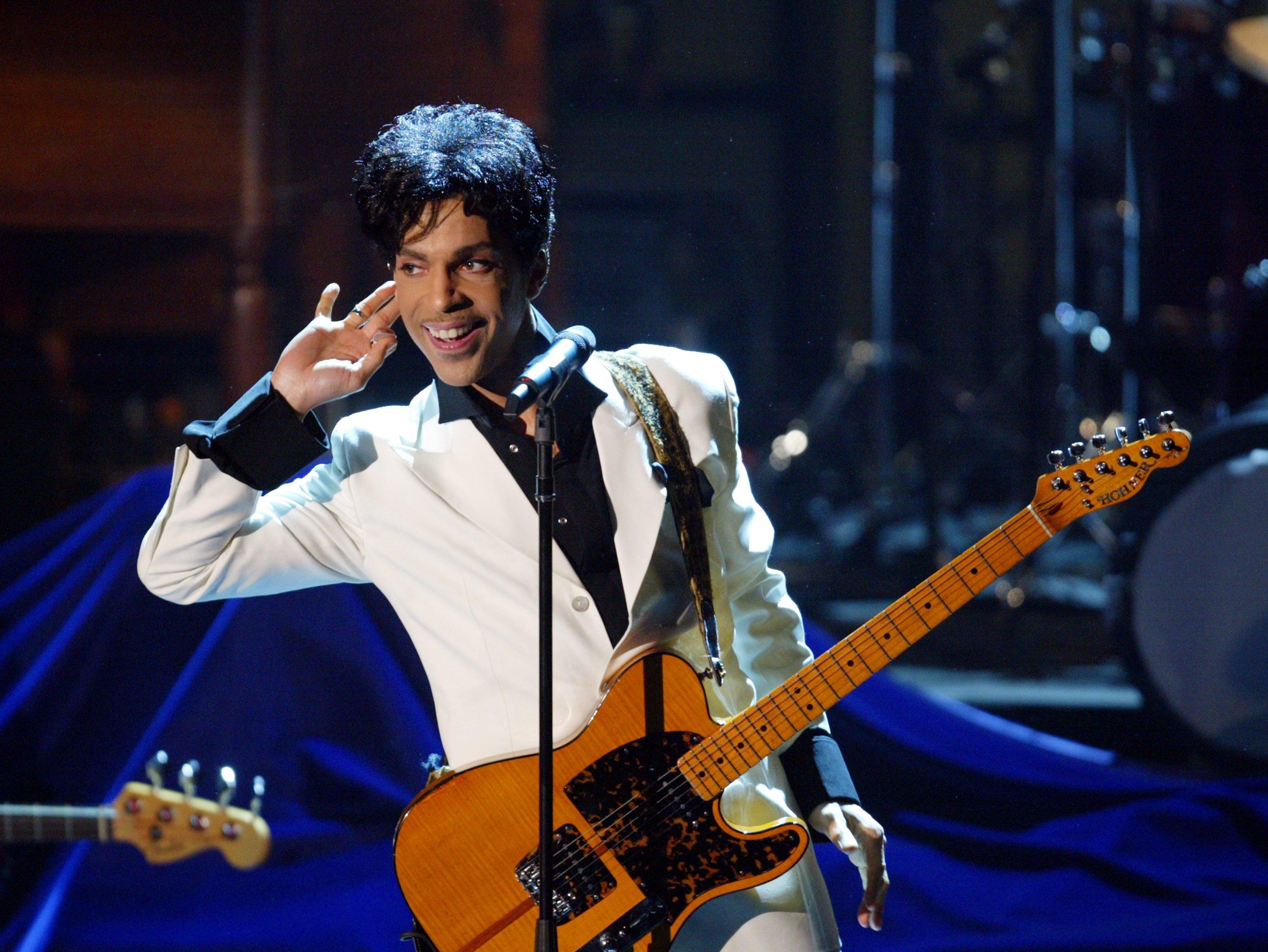
Photo: Kevin Kane/WireImage via Getty Images
list
7 Legendary Prince Performances You Can Watch Online In Honor Of 'Purple Rain'
Fans of the Purple One, unite: it's time to celebrate 40 years of 'Purple Rain.' Crank up these classic Prince performances in tribute to that epochal album, and beyond.
Have we really been living in a Princeless world for eight years? It doesn't feel like it. With every passing year, Planet Earth feels more of the magnitude of the Purple One's unbelievable accomplishments. Which includes the sheer body of work he left behind: his rumored mountain of unreleased material aside, have you heard all 39 of the albums he did release?
Yes, Prince Rogers Nelson was an impressive triple threat, and we'll likely never see his like again. In pop and rock history, some were wizards in the studio, but lacked charisma onstage, or vice versa: Prince was equally as mindblowing in both frameworks.
His iconic, GRAMMY Hall of Fame-inducted 1984 album Purple Rain — a soundtrack to the equally classic film — turns 40 on June 25. Of course, crank up that album's highlights — like "Let's Go Crazy," "When Doves Cry," and the immortal title track — and spin out from there to his other classics, like Dirty Mind, 1999, and Sign o' the Times.
To get a full dose of Prince, though, you've got to raid YouTube for performance footage of the seven-time GRAMMY winner through the years. Here are seven clips you've got to see.
Capital Centre, Landover, Maryland (1984)
Feast your eyes on Prince, the year Purple Rain came out. With guitarist Wendy Melvoin, keyboardist Dr. Fink, drummer Bobby Z., flanking him, even suboptimal YouTube resolution can't smother the magic and beauty. Check out this killing performance of Purple Rain's "I Would Die 4 U," where Prince's moves burn up the stage, with Sheila E. as much a percussion juggernaut as ever.
Read More: Living Legends: Sheila E. On Prince, Playing Salsa And Marching To The Beat Of Her Own Drum
Carrier Dome, Syracuse, New York (1985)
"Little Red Corvette," from 1982's 1999, has always been one of Prince's most magical pop songs — maybe the most magical? This performance in central New York state borders on definitive; bathed in violet and maroon, caped and cutting a rug, a 26-year-old Prince comes across as a force of divine talent.
Paisley Park, Minnesota (1999)
"I always laugh when people say he is doing a cover of this song… It's his song!" goes one YouTube commenter. That's absolutely right. Although "Nothing Compares 2 U" become an iconic hit through Sinead O'Connor's lens, it's bracing to hear the song's author nail its emotional thrust — as far fewer people have heard the original studio recording, on 1985's The Family — the sole album by the Prince-conceived and -led band of the same name.
Watch: Black Sounds Beautiful: Five Years After His Death, Prince’s Genius Remains Uncontainable
The Aladdin, Las Vegas (2002)
Let it be known that while Prince could shred with the best of them, he could equally hold down the pocket. This Vegas performance of "1+1+1=3," from 2001's The Rainbow Children, is a supremely funky workout — which also shows Prince's command as a bandleader, on top of the seeming dozens of other major musical roles he'd mastered by then.
Read More: Bobby Z. On Prince And The Revolution: Live & Why The Purple One Was Deeply Human
Rock And Roll Hall Of Fame Induction (2004)
Words can't describe Prince's universe-destroying solo over the Beatles' "While My Guitar Gently Weeps," in front of an all-star band of classic rockers including Jeff Lynne, Tom Petty, and George Harrison's son, Dhani. At song's end, Prince's guitar wails for a few more rounds, he tosses his Telecaster into the pit, and he struts offstage. We'll never see his like again.
Super Bowl Halftime Show (2007)
If you're the type of Super Bowl devotee who skips the Halftime Show, please — make time for Prince. When he digs into the trusty "Let's Go Crazy," it's hard not to follow suit. With fireworks blazing, and the Love Symbol brightly illumined, Prince arguably outshined the football game — as he tumbled through inspired cover after cover, by CCR, Dylan, and more. Naturally, he crescendoed with "Purple Rain," augmented by the drummers of the Marching 100.
Read More: Behind Diamonds and Pearls Super Deluxe Edition: A Fresh Look At Prince & The New Power Generation’s Creative Process
Coachella (2008)
At Coachella 2008, Prince offered a bounty of karaoke-style yet intriguing covers — of the B-52's ("Rock Lobster"), Sarah McLachlan ("Angel"), Santana ("Batuka"), and more. Chief among them was his eight-minute take on Radiohead's (in)famous first hit, "Creep," with a few quixotic twists, including flipping the personal pronoun I to a very Prince-like U.
"U wish U were special, / So do I," he yelps in the pre-chorus. Oh, Prince: to quote the radio-edited, de-vulgarized chorus of "Creep," you were so very special.
8 Ways Musicology Returned Prince To His Glory Days
